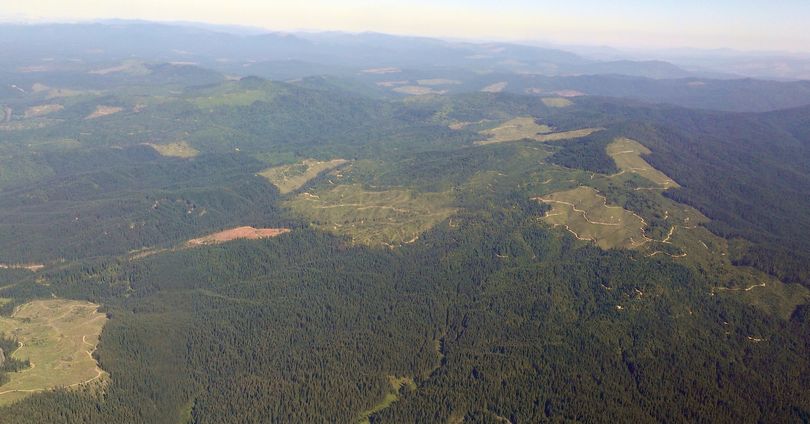Clearwater extends comment on forest plan

PUBLIC LANDS -- The Nez Perce-Clearwater National Forest is extending the scoping comment period on the Proposed Action for Forest Plan Revision until Nov. 14.
“We’ve received requests for an extension from a number of people and we want to make sure the public has ample time to understand the proposed action and share their comments with us," said Forest Supervisor Rick Brazell, noting that the Forest Plan will guide management on the Forest for ten to fifteen years.
The proposed action is available on the Forest’s website; follow the links for Forest Plan Revision.
- The Friends of the Clearwater are among the groups who disagree with portions of the revision, as stated in this July 14 statement.
Following is a message from the Forest supervisor who explains some points of the plan, notably the size of clearcut openings.
Forest Plan revision, proposed opening sizes
By Rick Brazell, supervisor, Clearwater-Nez Perce National Forests
The Nez Perce-Clearwater National Forests have been working to revise our land management plan (forest plan), which provides strategic direction for the Forest for the next 10 to 15 years. We’ve developed a proposed action with the expertise of our natural resource professionals and with input from the public either in person or through our website and email.
Recent letters to the editor have raised concerns regarding the size of even-aged regeneration harvest units (which the public sometimes referred to as clearcuts) proposed in our revision effort and I would like to correct some misinformation and clarify our intent. The National Forest Management Act (NFMA) requires us to establish maximum size limits for areas to be cut in one harvest operation. This includes various types of regeneration harvest that result in open stand conditions. NFMA planning regulations establish that maximum opening size as 40 acres for Idaho, but allow exceptions where necessary to achieve desired ecological conditions. The proposed action for the revised forest plan includes a standard establishing a maximum opening size of 150 acres in the breaklands and 80 acres in upland mesic conifer vegetation types. We are not proposing to create 1,500-acre even-aged timber harvest units. Analysis of forest historical conditions indicates that over time, naturally created openings in canyon breaklands ranged from less than 1 acre to 1,500 acres, with more than 50 percent of old forest acres found in patches (areas of similar vegetation age structure) over 150 acres. Naturally created openings in upland mesic conifers areas ranged from 1 acre to 800 acres, with more than 50 percent of old forest acres found in patches over 80 acres. The proposed maximum opening sizes are based on analysis of these old forest patches.
The reason we are proposing these new maximum opening sizes is based on ecological reasons such as more effectively addressing insect and disease (e.g., bark beetle outbreaks) or improving wildlife habitat. Long term, larger patch size may provide better elk security or interior habitat for species that require it. For example, northern goshawks prefer contiguous patches of 400+ acres for nesting and brood rearing. Over time, continually dispersing smaller regeneration harvests within the managed front country will result in many, smaller varied-age patches across the landscape, with fewer large, contiguous patches of mature trees. Historically, natural disturbances such as fire often created patches greater than 40 acres. Vegetation management practices that strive to emulate the scale, intensity, frequency and vegetative responses of natural disturbances follow the coarse filter philosophy, which aims to create forest conditions similar to those present historically, thus, maintaining the wildlife habitat needed to support a wide range of native species.
